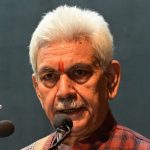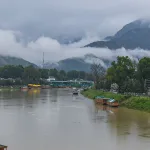Srinagar, Feb 12: Director of the Rural Development Department (RDD) Kashmir Shabir Hussain Bhat has said the department is making relentless efforts to enhance the quality of life in rural areas.
In an exclusive interview with Rising Kashmir Correspondent Shafat Malik, the Director RDD shared valuable insights into the ongoing projects, challenges faced and the department’s visionary approach towards long-term development goals.
Can you provide an overview of the role RDD plays in Kashmir?
The Rural Development Department with its Flagship programmes like MG-NREGA & PMAY-G plays an important role in the development of the rural areas of Kashmir. It involves leading and coordinating initiatives to improve the lives of people in rural areas. This includes planning and implementing projects focused on economic development, better infrastructure, and overall well-being of the people living in rural areas.
What are the ongoing key initiatives or projects to uplift rural areas?
Currently, we are actively involved in the implementation of our major programmes involving providing work to interested populations living in rural areas through MG-NREGA. To date, we have provided more than 1.52 crore mandays in the Kashmir Valley and we are focusing on achieving more than 1.65 crore mandays ending March 2024. It becomes the basis of infrastructure development, skill enhancement, and creating job opportunities in rural areas. These initiatives align with broader development goals by promoting sustainable growth, reducing poverty, and enhancing the overall quality of life in rural regions.
Can you tell us about the MGNREGA Convergence plan?
The MGNREGA Convergence plan involves combining efforts of other departmental programmes with the Mahatma Gandhi National Rural Employment Guarantee Act (MGNREGA) to improve the impact of various development schemes. Through convergence, we are able to integrate with other departments to ensure that the infrastructure gaps are covered efficiently. This collaborative approach aims to achieve comprehensive and inclusive development in rural areas.
What challenges do you face in implementing rural development programs, and how do you address them?
Challenges include geographical constraints and weather conditions, besides the digital initiatives in the shadow areas. We have successfully introduced various digital interventions like geo-tagging of the assets, MMS involving the workers and a Secure Platform of online estimations. This has been done through systematic planning and the use of technology. Successful strategies involve actively involving people, building local capacity, and efficiently using resources to overcome these challenges.
How does the department engage local communities in decision-making for development projects?
We prioritize community involvement through regular meetings and consultations. Understanding the unique cultural aspects of each area is crucial, and we ensure that projects resonate with the community’s identity and address their specific needs through careful planning and collaboration. Our planning is done at the Panchayat level and involves populations through organising GRAM SABAHAS at the Panchayat level.
Are there specific metrics or indicators to assess the impact of your projects on the quality of life in rural areas?
There is a huge influx of funds in rural areas through our schemes. We have provided connectivity via agricultural and horticulture lands thereby reducing the cost of fruit and agricultural produce. The rural economy gets an impetus through the influx of MG-NREGA funds. Our social audit wing conducts an audit of panchayats concerning the implementation of these schemes and programmes.
Can you share RDD’s long-term vision for the development of rural areas in Kashmir? What are the key focus areas?
We are focusing on working on Sustainable Development Goals. Every Panchayat has to adopt a theme and work as per its strength. Our aim is to make the communities self-reliant. Future projects will concentrate on economic diversification, skill development, and environmental sustainability to ensure a holistic transformation of rural areas. In 2024, we will prioritize Category-B works.
How is the feedback gathered and incorporated into decision-making?
Most of the feedback comes from the community. People voice their concerns in block diwas meetings and other programmes which are a gular feature of our IEC sessions. Community input is integral to our decision-making process, and instances of adjustments based on feedback include modifying project timelines, incorporating specific cultural elements, and adapting approaches to suit local needs.





